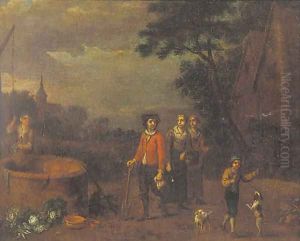Guiliam Van Aelst Paintings
Willem van Aelst, also known as Guiliam van Aelst, was a Dutch Golden Age artist known for his still life paintings. Born in Delft in 1627, Van Aelst came from a family of artists; his uncle, Evert van Aelst, was also a still life painter. Willem was initially taught by his uncle before moving to Amsterdam to study under the still life painter, Otto Marseus van Schrieck, who was known for his paintings of forest floor and undergrowth.
Van Aelst's career began to flourish when he moved to Paris in the 1640s, where he worked for Maria de' Medici, the Queen Mother of France. His time in Paris was short-lived, however, as he left for Italy by the mid-1640s. In Italy, he gained the patronage of Ferdinand II de' Medici, Grand Duke of Tuscany, and worked in Florence for several years. This period was crucial for his artistic development; he refined his technique and established a reputation for meticulously detailed and luxurious still life compositions, often featuring flowers, fruit, and dead game.
In 1656, Van Aelst returned to the Netherlands and settled in Amsterdam, where he became a successful and sought-after painter, influencing a number of other Dutch still life artists. His works from this period are characterized by a high degree of precision and an opulent quality, with a strong emphasis on texture and detail, such as the shine of metal, the translucency of glass, or the downy skin on a peach.
Willem van Aelst never married and had no known children. His death in Amsterdam in 1683 marked the end of a career that had a lasting impact on the still life genre in Dutch painting. His works are now held in many major museums around the world, showcasing the rich artistic legacy of the Dutch Golden Age.
